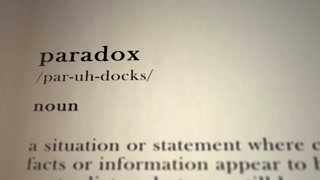Statement of the Problem
The Salvation Army exists to serve humankind through a variety of spiritual and social programs. There are direct program overhead costs associated with these efforts, such as office expenses, staff expenses, compensation for the officers and general expense. These are program costs that the organization must carry to provide support to the community. These costs should be reflected in the program budget presentation given to donors as part of a total program budget.
These budgets are funded through a variety of means; government grants, foundation grants, corporation gifts, individual current gifts and planned gifts.
It is our view that the following problems currently exist within the budget process:
The program budget is not donor-driven. The breakdown is not all inclusive of all costs associated to the expense of the program, including HR, office expense, officer cost, overhead and many times it is difficult to determine specific categories.
 The program section of the budget is understated and not every expense is included in the budget. The net result is that the fundraiser actually uses a “non all inclusive budget”.
The program section of the budget is understated and not every expense is included in the budget. The net result is that the fundraiser actually uses a “non all inclusive budget”.
It is important to understand the difference between an all-inclusive program budget and a budget that does not include all approved budget items.
It is impossible for fundraisers to accurately represent The Salvation Army programs using the current process. This results in donors not being given the total and correct numbers.
It is difficult for fundraisers to raise funds for the programs because the budget is not presented in total. Thus, donors may choose to fund programs that are outside the program budget, causing internal conflicts.
The end result of the current process is running the risk of losing donor support, being underfunded and causing departmental conflicts.
As the donor population is becoming more business-minded and sophisticated, The Salvation Army will continue to face difficult financial challenges. Donors always want and demand accountability for how their money is spent. Gone will be the days that a donor gives a donation to The Salvation Army because “I trust them”. Accurate verification and accountability grows trust and grows donor funding. The end result must be a win-win for all parties.
Proposed Solution
We recommend setting up Program Pricing. There are different “price points” to all categories of assistance. For instance, if the donor wants to contribute $1,000 to a project, they can identify that specific program. However, if they want to fund the total program, ALL the costs are included.
The goal is to present the donor with opportunities to provide funding for a program of their choice. Each program for support that is in the budget should contain these critical elements:
- Program category
- People served
- Location of program
- Price point
- Program description
- All costs
- Budget and budgeting process
Example of cost per individual served:
After school program annual budget is $152,000 however there are accounting, maintenance executive staff, etc. expenses that need to be added to the cost ($14,500) for a total of $166,500. This way when you go to funders you are covering all of the expense of the budget.
- Amount of Program budget $152,000
- Time allocation from other departments $14,500
- Divided by number served [20 per week] 1,040 = cost per individual per week $160
A $1,000 gift would cover all the costs of 6.25 children for an entire week, or one child for 32 weeks.
Scope of Work
We will work with you to develop a full and integrated Program Pricing for each program as follows
- The first meeting, in cooperation with the appropriate TSA personnel, will be to establish the Objectives and End Result for the work. We will also work to get “buy in” from all the interested parties and departments.
- Obtain agreement from all key departments in the process.
- Work with the Finance to develop the all-inclusive budget.
- Begin data gathering.
- Review and agree upon data gathered with Program and Finance all parties will approve and format all data gathered.
We have created a successful and thorough process that will improve the efficiency of the current program budget for The Salvation Army.
We look forward to assisting you with this opportunity.






